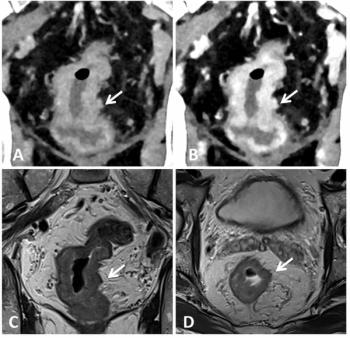
AHRA 2011: Industry Slow to Colombini MRI Lessons?
GRAPEVINE, TEXAS - A decade after a 6-year-old boy died in a freak MRI accident, what have medical regulators done to ensure greater MRI safety?
GRAPEVINE, TEXAS - A decade after a 6-year-old boy died in a freak
Not much, according to Tobias Gilk, senior vice president of RAD-Planning, Kansas City-based radiology and imaging design consultants.
The radiology world has adopted precious few rules for MRI safety since Michael Colombini was killed in 2001 at Westchester Medical Center in New York. But Gilk told AHRA annual conference attendees this week that progress may be coming, as federal health agencies reportedly talk official regulation for the first time since young Colombini's death.
To better understand how to prevent an incident like Colombini's, the industry must understand how his death happened at all, Gilk said. According to Gilk, one lesson has become clear: don't blame the oxygen tank. Though the radiology industry seized upon the tank, Gilk said, a greater look is needed at what led to the accident, what latent MRI safety risks tragically revealed themselves.
"Instead," he said, "we blamed the oxygen tank."
Gilk and colleagues analyzed the accident and identified 72 elements that contributed to Colombini's death. Problems that snowballed into the accident could linger as systemic problems in countless facilities if they are not properly addressed, Gilk noted.
Among the issues cited in the young boy's death was that staff gained easy access to the MRI magnet room, a potential danger Gilk said any organization should address by designing MRI suites with controlled accessibility to authorized personnel.
An adequate number of technologists also must always be aware of what's happening around them, and avoid the kind of communication breakdown that occurred in the Colombini incident.
And staff should remember risks aren't avoided simply by putting up magnet warning signs. "It's about how you effectively utilize your facility," Gilk advised.
It's essential to eliminate any of these latent issues, as the radiology world sees a large spike in MRI-related accidents, and faces even greater future risks. Among those risks is the growing Baby Boomer generation, whose aging population will undoubtedly create more imaging traffic. And they'll be heading to scans with even more powerful magnetic technology.
As Gilk noted, "Magnets are not getting any less magnet-y."
With increased tool potency and use, some safety experts continue the push for accreditation guidelines, a challenge when facility and staff needs are unique.
Some industry leaders - including Gilk, who has served on ACR's MRI safety committee - have thus far unsuccessfully advocated that MRI safety be mandatory training tied to facility accreditation.
But, Gilk noted, "It's not all bad news."
The hope of clear, standardized regulation is near, as federal guardians of the radiology industry could soon be stepping in. The FDA is reportedly planning a public meeting on MRI safety rules; the Joint Committee is working on MRI safety training for hospital surveyors; and CMS is hammering out radiology safety interpretive guidelines, possibly for this fall.
While the industry waits, Gilk counsels radiology professionals to advocate MRI safety training and the establishment of policies and procedures.
It will help ensure the continued use, he said, of what is still the safest, most accurate imaging technology.
"We cannot do any better than MRI," Gilk said, "if we follow the best practices."
Newsletter
Stay at the forefront of radiology with the Diagnostic Imaging newsletter, delivering the latest news, clinical insights, and imaging advancements for today’s radiologists.



























